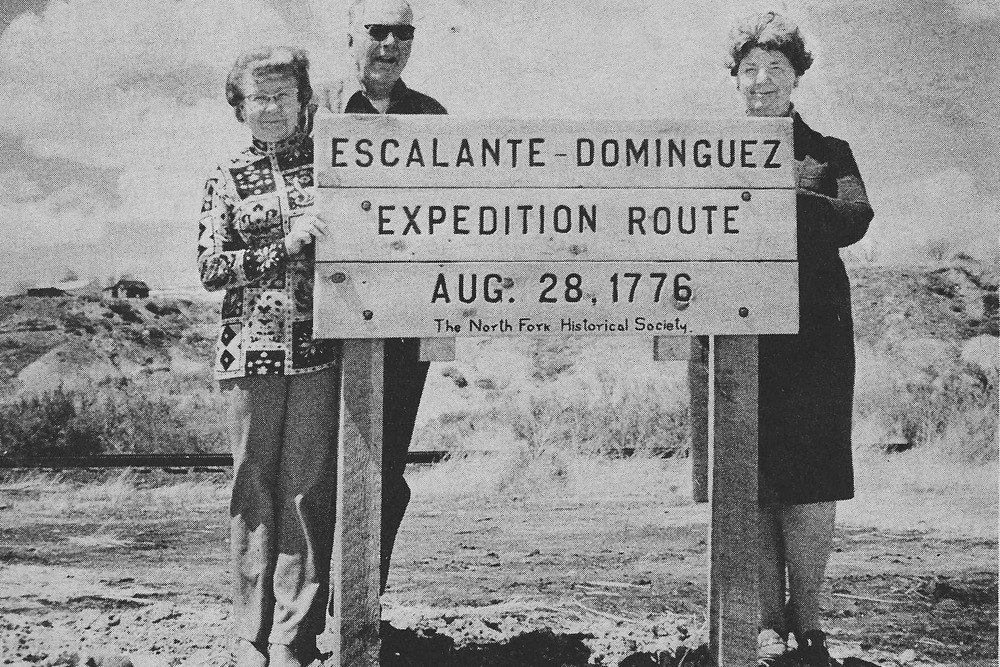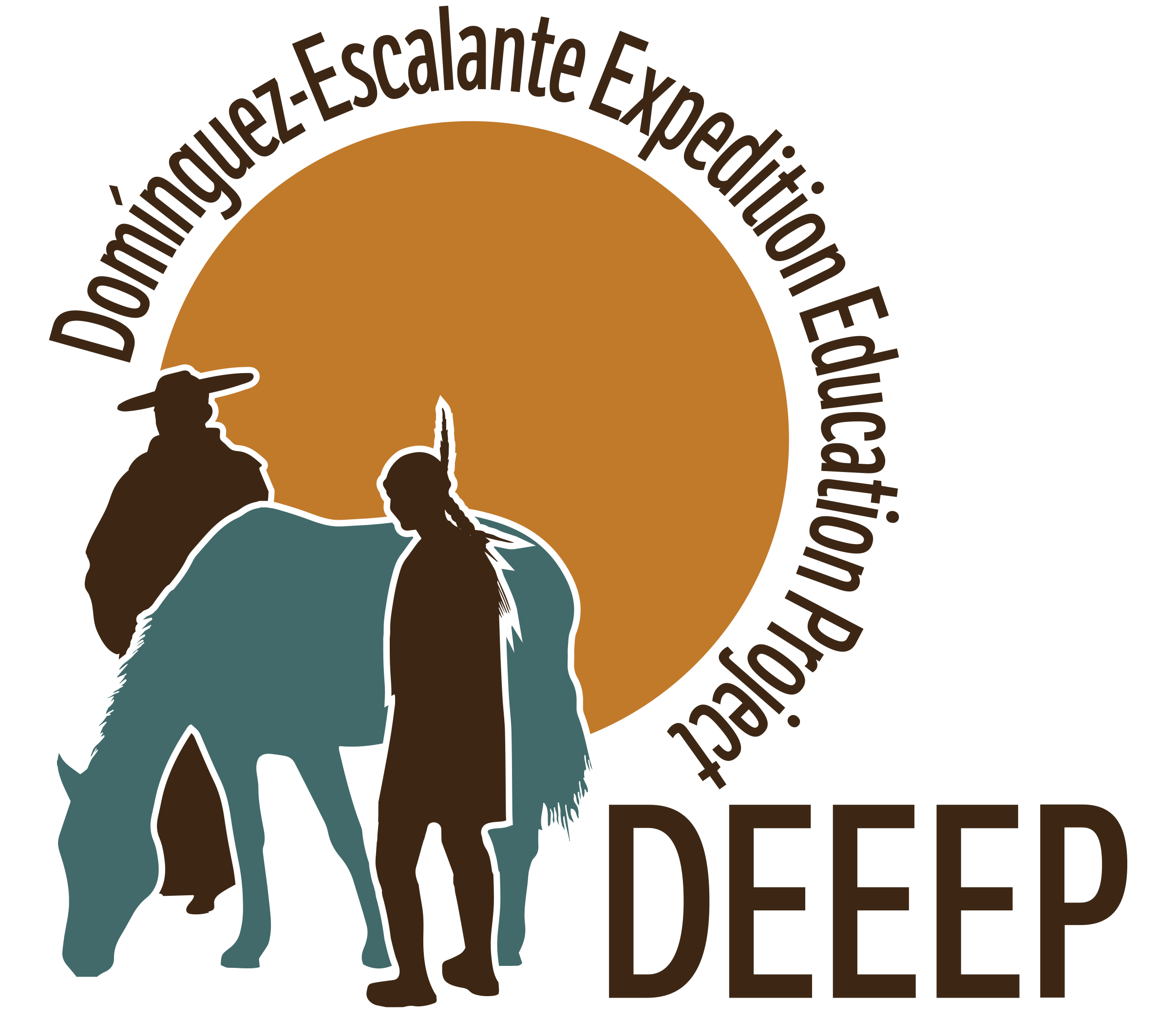What is DEEEP?
What is The Domínguez-Escalante Expedition Education Project (DEEEP)?
The Domínguez-Escalante Expedition Education Project, DEEEP, began as a question on February 2, 2020, when there seemed to be few answers about the Expedition in Colorado in 1776.

With not much information readily available, a group of over 85 volunteers who are ranchers, archeologists, historians, biologists, interested locals, educators, geologists, engineers, librarians, business owners, local historical groups, museums, universities, and state and federal agencies decided to come together to learn about, and then tell, the story of each day of the Domínguez-Escalante Expedition of 1776 in Colorado. Members of DEEEP come from all four states that the Expedition traveled through.
The Expedition’s Purpose
The purpose of the 1776 Expedition was to find a way to link Santa Fe, New Mexico, with the missions of California. Father Domínguez would lead the Expedition and Father Escalante would keep the Journal. They were gone for 159 days and traveled 1,700 miles. They did not make it to California but did provide knowledge back to others of all that they experienced and saw. On August 5th they entered Colorado at Carracas and traveled through what is now called the western slope of Colorado, entering Utah on September 12, 1776.
DEEEP’s Purpose
DEEEP Colorado’s purpose is to provide a website and educational tools for educators and researchers in time for the United States Semiquincentennial in 2026, the 250th anniversary of the 1776 Domínguez-Escalante Expedition. The website design and educational tools have inclusivity in mind, ensuring accessibility for users with disabilities.
How We Did It
This project has been a true labor of love and those involved have worked tirelessly to bring it to fruition.
Some DEEEP members and teams have worked for two years, some longer, mapping each day of the expedition in Colorado. Other members
have amassed a collection of research materials, leveraging the resources of libraries and universities in the four states traversed by the Expedition.
DEEEP Colorado has received a grant from the West End Pay It Forward Trust. Individual sponsors and members have also funded the creation of the website. West End Economic Development Corporation (WEEDC), a non-profit organization, manages funding for DEEEP.

